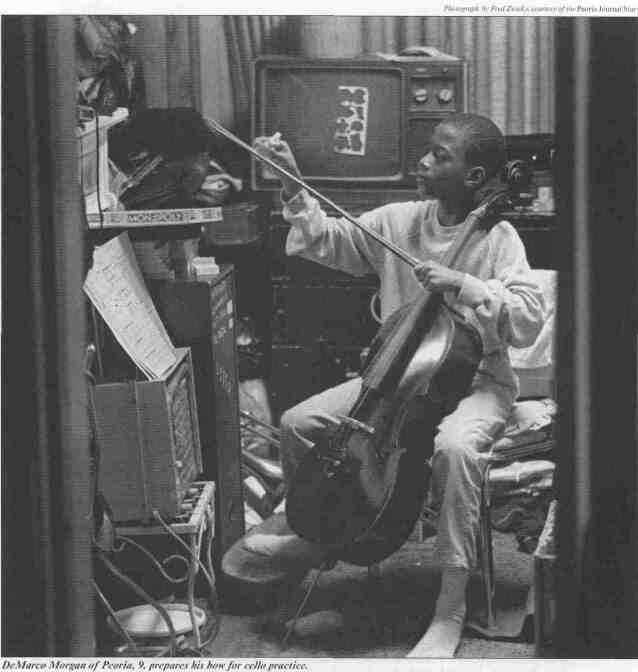24 / November 1999 Illinois Issues
No time to be a kid
Our children don't play freeze tag anymore.
There's no time between baseball and ballet.
And the kids are paying the price
By Jennifer Davis
The schooners, the waves, the clouds,
the flying sea crow, the fragrance
of saltmarsh and mud, the horizon's edge.
These become part of that child who
went forth everyday
And who now goes and will
always go forth everyday.
from Walt Whitman's Leaves of Grass
Walt Whitman's verse no longer
has relevance to our lives. Our
time for the soul is lost, surrendered to
the phrase "You've Got Mail" or
drowned in the raucous lights and
music at Chuck E. Cheese. The drive
from soccer practice to ballet is not
long enough to ponder.
We have no time to think, let alone
absorb nature's beauty or play a
spontaneous game. There are 2-year-olds to prep for prep school, after all.
Wait a minute. A growing number of
psychologists (psyche being Greek for
the soul) are warning us to heed a childhood chant: Stop. Look. Listen. Does
your 10-year-old really need soccer,
hockey, piano and drawing? Maybe not.
They warn the price of all these activities
may be stressed out, overscheduled kids.
Not only famous children such as
tennis star Jennifer Capriati, who turned
pro 24 days before her 14th birthday suffer this fate. Psychologist Sheila
Ribordy treated an 8-year-old who
thought his parents had enrolled him in
so many activities to avoid spending
time with him. "They definitely had the
best of intentions," says Ribordy, director of the clinical psychology training
program at DePaul University in Chicago, of the parents.
Why would well-meaning parents
cause a child heartache? Because the
problem runs deeper than individual
parents. Society encourages this overbooking of our kids. "We are going
through one of those periods in history, such as the early decades of the
Industrial Revolution, when children
are the unwilling victims of societal
upheaval and change," writes David
Elkind, a professor of child development at Tufts University and author
of The Hurried Child: Growing Up Too
Fast Too Soon.
Our children don't play freeze tag anymore. And they don't ride bikes around
the neighborhood like they used to;
instead, they go to soccer and ballet and
computer camp. The activities themselves are not bad. But often as parents
we push our children. Do more. Learn
more. Excel more. They go to camp at
the expense of spending a Thoreau-like
summer in their backyards.
Part of the reason we do this is that
the traditional family, which we might
equate with homemade sit-down dinners
and Sundays in church, has evolved
beyond the 1950s. June Cleaver is now a
soccer mom. No single image of the
modern family single-parent,
divorced, blended, two-income comes
to mind. Except, perhaps, a stressful
one.
Since the 1960s, when the family
dynamic started changing, society has
found itself following two styles of
child-rearing: that of Superparent
raising Superkid and that of the
stressed-out parent bypassing their kid's
childhood as a means of lightening the
load. Thus, the child who can start dinner can make dinner. Or the child who
can put away his clothes can do laundry
and so forth.
Further, our so-called latchkey kids
face not a demanding parent, but an
invisible one. An empty house. Mindless
television and video games for company.
Illinois Issues November 1999 / 25
Too much freedom, but no real time
for the soul.
Despite the tumultuous cultural
change, encouraging statistics have
emerged. In this decade, the nation's
rates of teenage births, violent juvenile
crime and teenage drug use have all
declined. However, at the beginning of
one of our most narcissistic, consumption-conscious decades, the '80s, Elkind,
rather prophetically, noted that our children were in trouble. In the '90s, reality
bore out his assertion in the form of
tragedies like Columbine.
We should not be surprised that our
children commit adult acts of violence
when we have made the mistake of
treating them like adults.
Elkind used the simple case of how
children spend their summers to illustrate his point that we rush maturity.
"The change in the programs of summer
camps reflects the new attitude that the
years of childhood are not to be frittered
away by engaging in activities merely for
fun," notes Elkind. "Rather, the years
are to be used to perfect skills and abilities that are the same as those of adults."
Mini-adults. That's what we're raising.
Not children. JonBenet Ramsey wore
|
There's no single face on youth rebellion
By Josh Bluhm
A pallid-faced crowd dressed in black gathers outside
Chicago's Metro nightclub, and draws derisive shouts
from a passing car. "Hey, where's the funeral?" mocks 26-year-old goth David Birdwell of Chicago. For Birdwell and
other goths, such vocal abuse is almost a cliche. Yet, such a
casual approach reflects the attitude of alternative groups.
Hip-hop, gangsta, grunge, punk and hippie. The gothic
scene is one of myriad youth subcultures that have
emerged, or re-emerged, at a stunning pace in recent years.
This splintered face of alternative cultures is a result of the
electronic age. The explosion in Internet use has inundated
youth with information, and given them countless opportunities to experiment with identity In 1999, there's no one face to youth rebellion.
Of course, there's a side to youth subcultures that's timeless. Adolescents have always faced simultaneous and conflicting impulses: to identify with others and assert
individualism. The dissension between mainstream society
and subcultures, including the goths, sounds as if it comes
from 1960s revolutionary Tom Hayden's Justice in the
Streets'. "As the misfits of a dying capitalism, we were
repressed in unique ways and had to rebel in unique ways."
Though ways to rebel may have evolved, the reasons to
participate in subcultures remain a constant. "Youth
identify with subcultures because they are looking for a
home, looking for the thrill, the risk of being perceived as
dangerous," says Beth Doll, an expert on youth development and a professor of educational psychology at the University of Colorado. Young people are going through
rebellion and experimentation just as previous generations
did, but today's easy access to information widely expands
the experiences available to contemporary kids, says
Nanette Potee, a professor of intercultural communications
at Northeastern Illinois University in Chicago. Such
communication barriers as time and space are shattered by
technology, and cultural distinctions between geographical
areas become more obscure.
Changes in the face of society have given room for the
computer to become a powerful influence. Many children
have both parents working, says Wheeling High School
social worker Tom Scotese. This tends to mean they look
more outside the family for identity. What they are discovering for themselves, through the infinite possibilities made available by computers, often defies easy categorization by
mainstream society.
"Youth today are more technology oriented, technology
driven. As a result, what used to be a huge division between
urban and suburban no longer exists," Potee says. "The
experience of the kids in the suburbs is, at times, not so
different from the kids in the city."
Potee calls the mosaic of youth groups "co-cultures,"
and Doll says teens may shift from one group to another.
Most subcultures are constantly in flux. Lacking any rigid
hierarchal structure, subgroups have a tendency to resist
definite labels. Any one subgroup may share features of
other groups.?
The goth scene is just one of the many subcultures that
have grown exponentially as a result of technological
advancements. Yet gothic remains a relatively loosely
defined concept. "It is difficult to say what is gothic," Bird-well says. "It is not, as portrayed by the media, an organized group with leaders. It is basically artists and creative people
who have decided not to follow the masses in letting television and fashion magazines tell them what is hip to wear this month." He adds, "We'd just rather go to the new Jekyll
and Hyde club, and laugh at the cheesy B movies and talking skeletons, than go to the ESPNzone."
Springfield Southeast High School teacher Joni Paige
says she has noticed that her students are dramatically
affected by the media images issuing from electronic
sources. She points to the response of her students in
the aftermath of the events last spring in Littleton.
"Students were just as confused and had just as many
questions about the images coming out of Columbine
|
26 / November 1999 Illinois Issues
mascara and lipstick, and babies toddle
about looking just like us in miniature
Baby Gap jeans.
This is the single most important
cultural change regarding children over
the last 30 years: our view of them.
Decades ago, pushing children too
soon was frowned upon, thus the phrase
"early ripe, early rot." Society's view of
how to best raise our children had
changed drastically from the first part of
the century when they were sent to work
in the mines and factories. But, in some
respects, we've come full circle. The
return to a race to adulthood started in
the '60s, with an outpouring of new
research promoting early childhood
learning. Tax-supported kindergartens
became the norm. Parents started to
believe that children could, indeed
should, do more, learn more, be exposed
to more.
This shift in the view of child competence has us pushing and scheduling
them more, lest we squander their precious early years when learning capacity
is at a peak. For single parents, the
added benefit is that it soothes their guilt
about exposing their children to more
adult responsibilities. Give them more
|
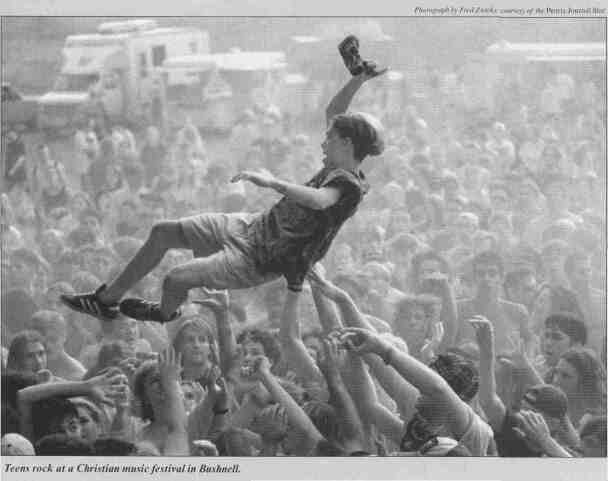
as everyone else." She adds, "They really were anxious
to talk about what was happening."
The universality of the computer-focused world, in
particular, with its diversity of images, provides young
people with a broader experience. But at times that can be
disorienting. Paige says, "These more intelligent kids
exhibit more disillusion."
And David Birdwell notes, "It is traumatic for kids to
grow up seeing adults in the media fighting, having
affairs; 'Just Do It' and 'Just Say No' on the same TV."
The contradictory messages contribute uncertainty to
the already unstable period of adolescence. And at times,
any form of identity the young develop represents, for
them, a sense of security amid the confusion.
Birdwell adds, "Many kids feel that they should be able
to wear black and pierce their nose, since it is so much
more tame than what their parents were doing when they
were that age. "
|
Illinois Issues November 1999 / 27
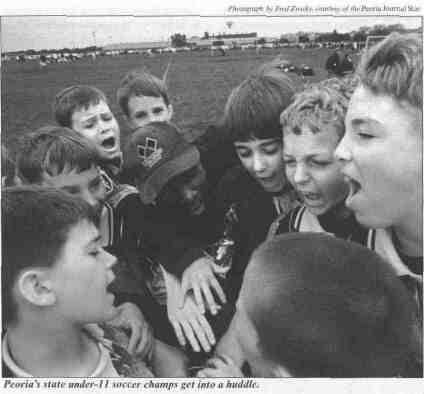
because they can handle it. It's good for
preteens to come home to an emptyhouse every night and fix themselvesdinner. It teaches self-reliance, parenting articles argue.
And we, with our e-mail and faxes
and other immediate technogratifications, are so used to squeezingevery productive moment from everyday that we do the same for our children. With the best of intentions, ofcourse.
Certainly, Stefano Capriati hadthe best of intentions when he sent
his adolescent daughter out on the
professional tennis circuit. But he could not ignore his daughter's
breakdown at a U.S. Open press conference last September. In front ofthe microphones and cameras,
Capriati dissolved and, as one reporter put it, mourned "her
ransomed childhood." Speaking ofher shoplifting and drug use, she
said she took "a path of quiet rebellion, of a little experimentation of a darker side of my confusion in a
confusing world, lost in the midst offinding my identity."
We rush our children from soccer to piano, let them play video games at hyperspeed and then wonder why record numbers of children need Ritalin to sit still in school. Entertain them every second, build them a $5 million Disney-style day care in suburbanChicago complete with scaled-down tennis courts and then question teachers who complain that they are seeing more and more passive learners.
It's not a stretch to think that recent school shootings nationwideare our children's cry for help. Troubled teens won't all rebel quietly as Capriati did and then poetically explain their actions.
The fractured family structure, which has gone from being the exception tothe norm over the last 30 years, relieson this new view of child rearing:
Children don't need to be sheltered or nurtured '50s-style; there's just no timefor it in the '90s.
Jennifer Davis, a reporter for the PeoriaJournal Star, is a former Statehouse bureau chief for Illinois Issues and the mother of 5-year-old Drew Scott, whom she takes to hockey and soccer practices.
|
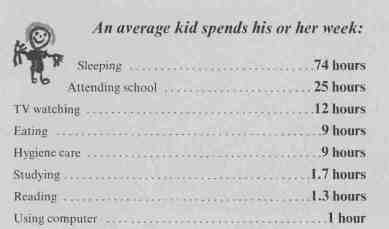
Playing soccer, baseball, hockey, basketball, football, volleyball; taking gymnastics, swimming, Tae Kwon Do, art, drama and music lessons;
talking on the phone; spending family time; fighting with siblings; doing chores; observing religion; putting puzzles together, playing games, building sand castles; flying kites, riding bikes, climbing trees, swinging and sliding, drawing pictures and playing video games; skateboarding,rollerblading; going to parties and club meetings; hanging out and other stuff ....................................50 hours
|
Source: Healthy Environments. Healthy Children: Children in Families,
a 1998 study by the University of Michigan, based on 3,586 participants under the age of 13.
28 / November 1999 Illinois Issues
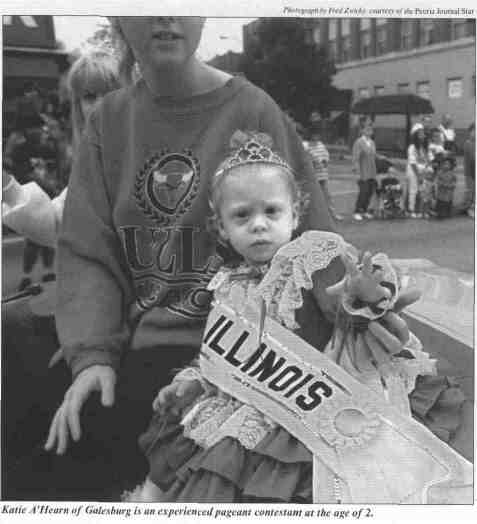
Illinois Issues November 1999 / 29
